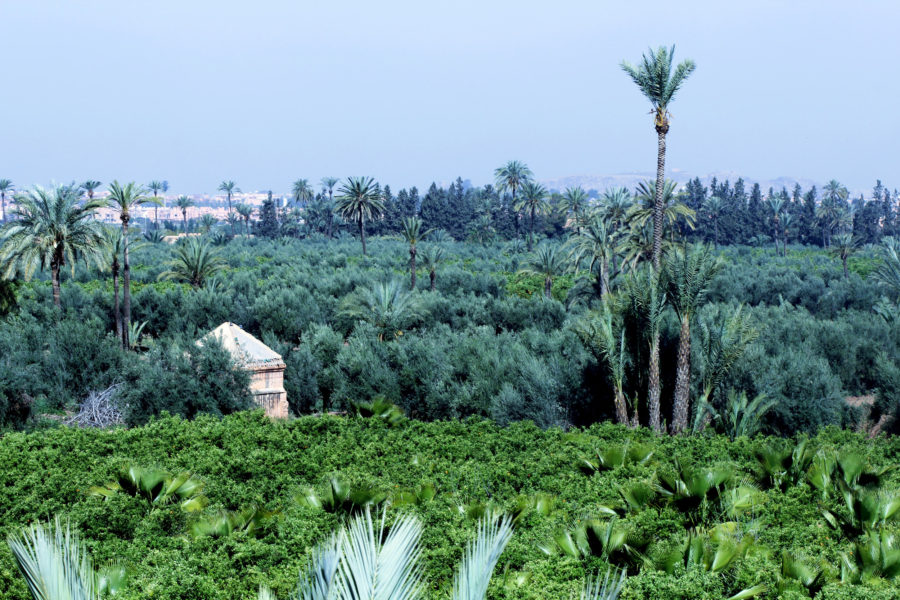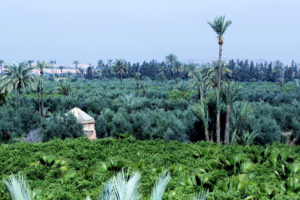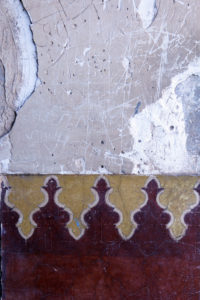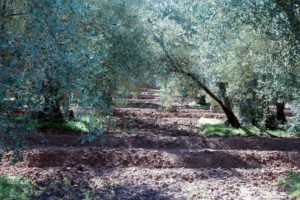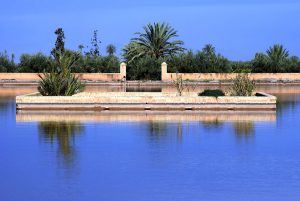 The rehabilitation project of Agdal Gardens in Marrakech is moving forward. A technical visit has been recently carried out involving some of the work team members. The main goal was to complete the measuring tools and details necessaries to write up the intervention project draft of the first phase. This include the main access to the gardens, the rebuilding of Dar Insaha, the gardens and surroundings of Zahiria, the water ponds of the Nenuphars as well as the restoration of the Minzah building and the water pond of Dar-Al Hana.
The rehabilitation project of Agdal Gardens in Marrakech is moving forward. A technical visit has been recently carried out involving some of the work team members. The main goal was to complete the measuring tools and details necessaries to write up the intervention project draft of the first phase. This include the main access to the gardens, the rebuilding of Dar Insaha, the gardens and surroundings of Zahiria, the water ponds of the Nenuphars as well as the restoration of the Minzah building and the water pond of Dar-Al Hana.
The landscapers and botanists José Tito and Manuel Casares as well as the architect Miguel Ángel Casares, all of them from Granada University; and the architect Fernando Lara have travelled there with this purpose.
In the other hand, the 22nd April started the 2nd campaign regarding the assets cataloging of the Agdal Gardens, which will last until the 12th of May. The archeologists and architects team of the Archaeology and Architecture of teh City Laboratory, belonging to the Arabic Studies School of Granada, lead by the archaeologist Julio Navarro Palazón will take part in this campaign.
The Agdal Gardens were built in the middle of the XIIth century. The gardens originally were an almohade recreation property and have always belonged to the ruling dynasties and to the State
This campaign will be fund by the aid programme aimed at archaeological projects abroad, of the General Direction on Fine Arts, Cultural Assets and Libraries and Archives (Ministry of Culture, Education and Sports) with the contribution of the Islamic Culture Foundation.
Conserving the heritage
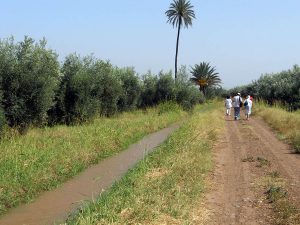 The current work campaign started in January 2012, supported by FUNCI. It consists of a long term project which contemplate performances aimed at conserving the heritage value of the monument in order to adapt it to the new urban development needs. In this campaign, together with Navarro Palazón, 10 researchers from the Laboratory specialists in different topics (archaeologists, architects, technical architect, drawers) will take part in those works. Among the members of the team, Fidel Garrido, José Manuel Torres and Paula Sánchez are working on it.
The current work campaign started in January 2012, supported by FUNCI. It consists of a long term project which contemplate performances aimed at conserving the heritage value of the monument in order to adapt it to the new urban development needs. In this campaign, together with Navarro Palazón, 10 researchers from the Laboratory specialists in different topics (archaeologists, architects, technical architect, drawers) will take part in those works. Among the members of the team, Fidel Garrido, José Manuel Torres and Paula Sánchez are working on it.
The Agdal Gardens were built in the middle of the XIIth century. The gardens originally were an almohade recreation property and have always belonged to the ruling dynasties and to the State. It has 500 Ha of extension and consists of cultivated spaces, hydraulic infrastructures and palace buildings surrounded by walls which originally reached 10 km of perimeter.
The space together with the Medina of Marrakech and the Menara, is part of the UNESCO World Heritage List and has passed by different phases through its eight centuries of history, including periods of temporary abandonment. Currently, it is an agricultural land, which maintains its characteristics and functions. The gardens are irrigated by and important hidraulic network which originally was formed by subterranean galleries. This network provided water to two big water ponds acting as watering regulators being part of a complex of recreational activities.
This post is available in: English Español

